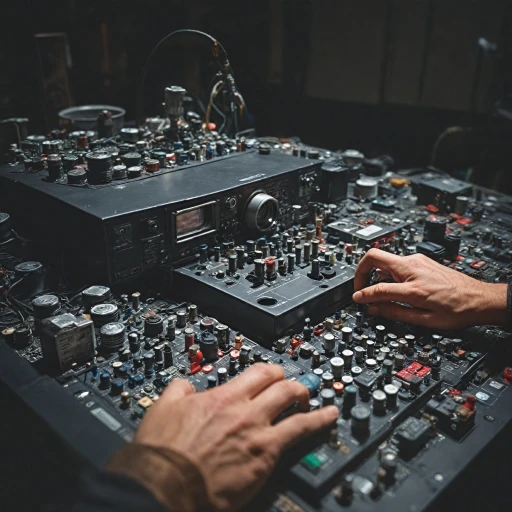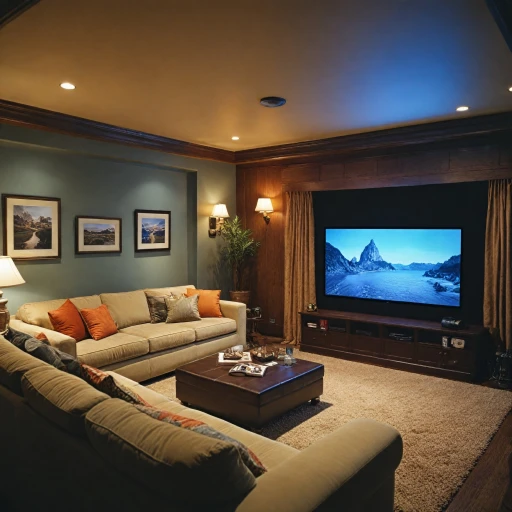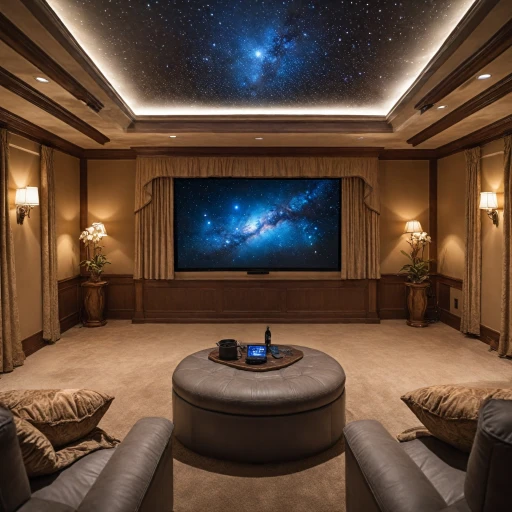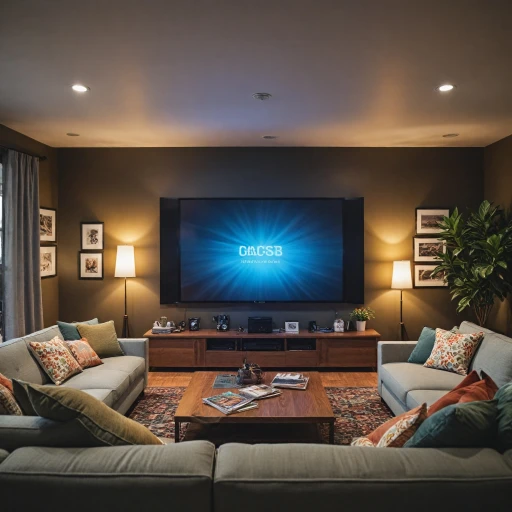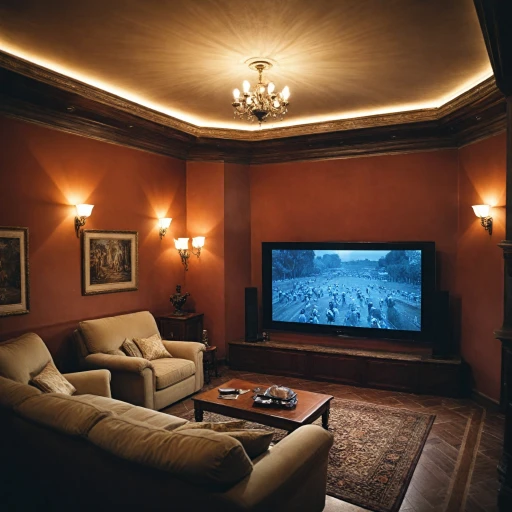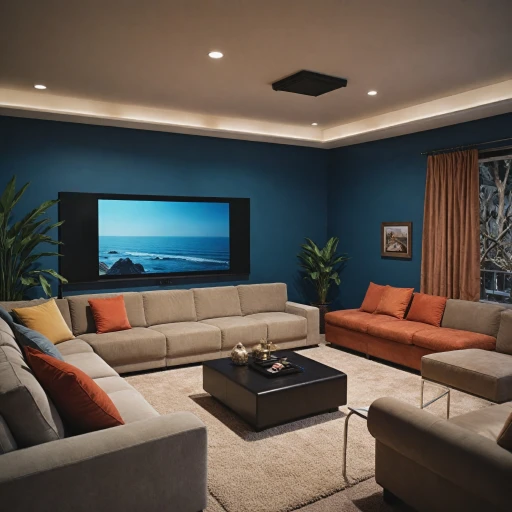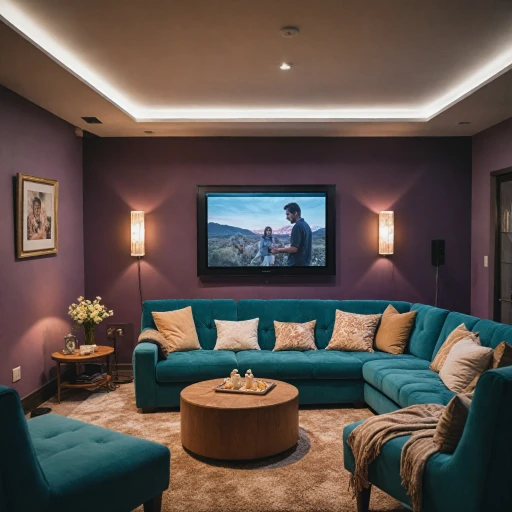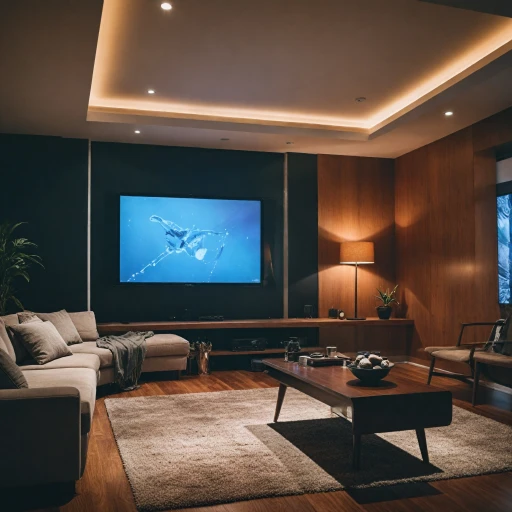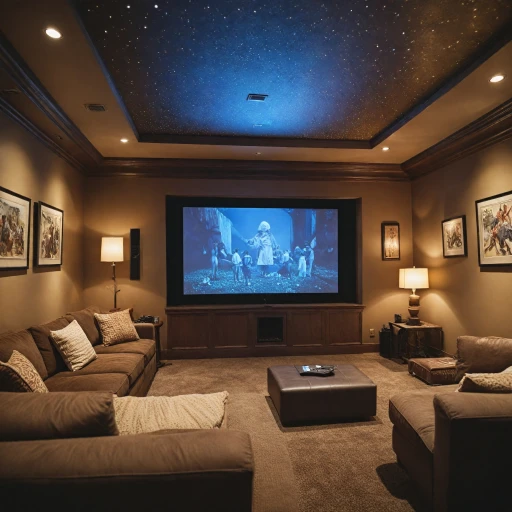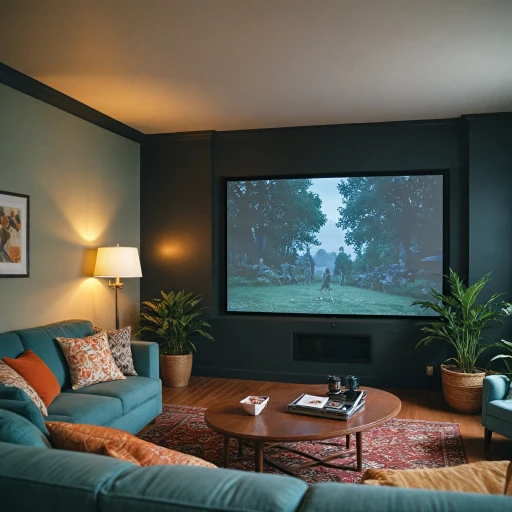
Understanding Short Throw Laser Projectors
Exploring the World of Short Throw Laser Projectors
Short throw laser projectors are revolutionizing the way we experience home theaters. Unlike traditional projectors, these devices are designed to project large images from a short distance, making them ideal for smaller spaces. The technology behind these projectors allows for a throw ratio that enables a large screen experience without the need for a vast room. This feature is particularly beneficial for those who want to maximize their viewing experience in compact areas.
One of the standout aspects of short throw laser projectors is their use of laser light sources. This technology not only enhances the brightness and color accuracy but also extends the lifespan of the projector compared to traditional lamp-based models. With projector lumens often reaching impressive levels, these devices ensure a vibrant and clear image quality, even in rooms with ambient light.
For those interested in the latest advancements, models like the Epson EpiqVision and the AWOL Vision series offer cutting-edge features that cater to both casual viewers and home theater enthusiasts. These projectors support high dynamic range (HDR) content, providing an immersive experience with enhanced color and contrast. Moreover, the integration of Dolby Vision and Dolby Atmos in some models further elevates the audio-visual experience, making you feel like you're in a large venue cinema.
When considering a short throw laser projector, it's essential to understand the differences between short throw and ultra short throw models. While both offer the convenience of close-range projection, ultra short throw projectors can be placed even closer to the screen, often just inches away, making them perfect for setups where space is at a premium.
For more insights on how to enhance your home theater experience with innovative projector solutions, check out this comprehensive guide.
Advantages of Short Throw Laser Projectors
Why Choose Short Throw Laser Projectors?
Short throw laser projectors have revolutionized the home theater experience by offering unique benefits that traditional projectors can't match. With their advanced technology, they provide a compelling blend of convenience, versatility, and exceptional image quality. Here are some advantages that make short throw laser projectors an appealing choice:
- Space Efficiency: Short throw projectors can produce a large image from a short distance, making them ideal for smaller rooms or multi-functional spaces. This feature is especially beneficial if you want to transform your living room into a home theater without rearranging the layout.
- Image Quality: These projectors use laser technology to deliver bright, vibrant, and accurate colors with high projector lumens. This results in a more vivid and immersive viewing experience, rivaling even the best large venue setups. The light source used in laser projectors ensures consistent brightness and color accuracy, enhancing your viewing experience.
- Ease of Use: With a throw ratio optimized for proximity, ultra and short throw laser projectors are easier to set up and adjust compared to conventional projectors, reducing the potential for screen shadows. This makes them perfect for casual movie nights or even dedicated golf simulator setups.
- Longevity and Low Maintenance: Laser projectors require less frequent maintenance and offer a longer lifespan compared to traditional lamp-based models. The steady light source means you won't be replacing bulbs often, saving on long-term costs.
- Cost-effectiveness: Despite the upfront price, the long lifespan and low maintenance needs make them a smart investment for high-quality home cinema experiences. The price point becomes more justifiable when considering features like dolby vision and dolby atmos support, which add further layers to your audio-visual immersion.
For an enhanced viewing experience, pairing your projector with the right screen can greatly improve performance by optimizing image clarity and contrast. This combination enhances the capabilities of your projector, maximizing the return on your investment.
Key Features to Look For
Key Characteristics of Leading Projectors
When selecting a short throw laser projector for your home theater, there are several essential features to consider that will ensure top-notch performance and an immersive viewing experience.- Projection and Throw Ratio: The throw ratio indicates how large the image will be from a specific distance. For short throw projectors, a low throw ratio is crucial, enabling you to project a large screen size from just a few feet away. Opting for an ultra short throw projector can provide even more flexibility in constrained spaces.
- Laser Light Source: Unlike traditional bulb projectors, laser projectors offer superior brightness and color accuracy, which enhance image quality. They also have a longer lifespan, reducing maintenance needs.
- Brightness and Lumens: Measured in lumens, brightness is critical for vibrant image quality. Depending on your room’s ambient light conditions, a higher lumen count might be necessary to prevent washed-out images.
- Resolution and Image Quality: To ensure a crisp and detailed picture, look for projectors that support high resolutions like Full HD or 4K. The clarity of the image is tied significantly to the resolution.
- Color Accuracy and Technology: Technologies such as LCD or DLP, along with support for color standards like Dolby Vision, can significantly enhance color reproduction, ensuring each hue is rendered with precision.
- Dolby Atmos and Audio Support: While some projectors are enhanced with built-in audio, integrating with a dedicated surround sound system featuring Dolby Atmos can significantly improve the auditory experience.
- Aspect Ratio Compatibility: Ensure compatibility with various aspect ratios to accommodate different content types, from movies to games, for a versatile viewing experience.
Installation Tips for Optimal Performance
Positioning the Projector for Maximum Impact
Setting up your short throw laser projector can massively impact your viewing experience. Unlike long throw projectors that need more distance, the throw ratio of short throw models allows them to be placed closer to the screen, offering a large image without requiring large spaces. For ultra short throw projectors, placement is even more flexible.
Optimizing Screen Size and Position
Achieving the right image quality starts with choosing the correct aspect ratio and screen size. Ensure the projector covers your desired vision range, avoiding glare or distortion by keeping it aligned with the center of the screen. The throw ratio will dictate how close you can situate your projector to the screen relative to the desired image size and brightness quality.
Lighting and Lumens Control
The projector lumens rating will determine how well your device performs in different lighting conditions. Ideally, a projector with higher lumens is better for well-lit rooms, whereas lower lumens are suitable for darker environments, ensuring color accuracy and light balance. Properly adjusting the room's light source, minimizing ambient light, will enhance the vividness and sharpness of the projected image.
Audio Integration and Enhancements
To complete your home theater setup, integrating audio systems like Dolby Atmos can complement the visual technology. While some laser projectors come with built-in speakers, for immersive audio, consider pairing the projector with external sound systems for superior audio support.
Perfecting the Visuals with Calibration
Ensure optimal color grading and image brightness by fine-tuning projector settings. Checking the lcd or laser setup and calibrating color accuracy frequently will maintain the projector's performance. Regular adjustment of these factors can greatly impact the viewing experience in terms of image quality.
Comparing Short Throw vs. Long Throw Projectors
Understanding the Differences in Throw Distances
When diving into the world of home theater projectors, understanding the difference between short throw and long throw projectors is crucial. The primary distinction lies in the throw ratio, which determines how far the projector needs to be from the screen to produce a clear image. Short throw projectors, including ultra short throw models, can project large images from a short distance, making them ideal for smaller spaces or setups where the projector needs to be close to the screen.
Image Quality and Brightness
Both short throw and long throw projectors can deliver excellent image quality, but there are some differences to consider. Short throw projectors often use advanced laser technology, providing vibrant color accuracy and high brightness levels, measured in lumens. This makes them suitable for environments with ambient light. On the other hand, long throw projectors might offer higher brightness and are often used in large venues where the projector is positioned further from the screen.
Installation Flexibility
Short throw projectors offer greater flexibility in installation, as they can be placed closer to the screen, reducing the need for extensive cabling and complex mounting solutions. This is particularly beneficial in home theaters where space is limited. Long throw projectors, however, require more distance, which might necessitate ceiling mounts or dedicated projector rooms.
Cost Considerations
Price is another factor to consider when choosing between short throw and long throw projectors. Short throw models, especially those with laser technology, can be more expensive due to their advanced features and compact design. However, the investment can be worthwhile for those seeking a seamless and immersive viewing experience without the hassle of complicated installations.
Use Cases and Applications
Short throw projectors are perfect for home theaters, golf simulators, and spaces where the projector needs to be close to the screen. They support technologies like Dolby Vision and Dolby Atmos, enhancing the overall experience. Long throw projectors, with their higher projector lumens and ability to cover larger distances, are often used in professional settings or large venues.
Maintenance and Care for Longevity
Ensuring Longevity with Proper Maintenance
To keep your short throw laser projector performing at its best, regular maintenance is crucial. Proper care not only extends the lifespan of your device but also ensures that the image quality remains top-notch. Here are some essential tips to help you maintain your projector:
- Regular Cleaning: Dust and debris can accumulate on the lens and vents, affecting the brightness and color accuracy. Use a soft, lint-free cloth to gently clean the lens. For the vents, a can of compressed air can help remove dust without causing damage.
- Check the Light Source: The laser light source in your projector is designed to last longer than traditional lamps, but it’s still important to monitor its performance. If you notice a decrease in brightness, it might be time to consult the manufacturer’s guidelines or seek professional support.
- Monitor the Throw Ratio: Ensure that the projector is positioned correctly to maintain the optimal throw ratio. This will help in preserving the image quality and prevent any distortion.
- Temperature Control: Projectors can overheat if not properly ventilated. Ensure that your projector is placed in a well-ventilated area and avoid blocking the vents. This will help in maintaining the internal components and prevent any damage due to excessive heat.
- Software Updates: Keep your projector’s firmware updated. Manufacturers often release updates that can enhance performance and fix any bugs. Regular updates can also improve the compatibility with other devices and technologies like Dolby Vision and Dolby Atmos.
By following these maintenance tips, you can ensure that your short throw laser projector continues to deliver an exceptional viewing experience, whether you're enjoying a movie night or using it as a golf simulator. Regular care not only enhances the longevity of your projector but also ensures that you get the best value for your investment.

